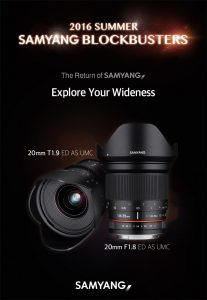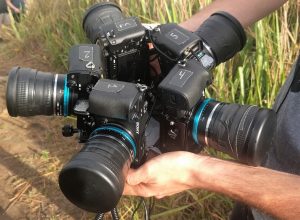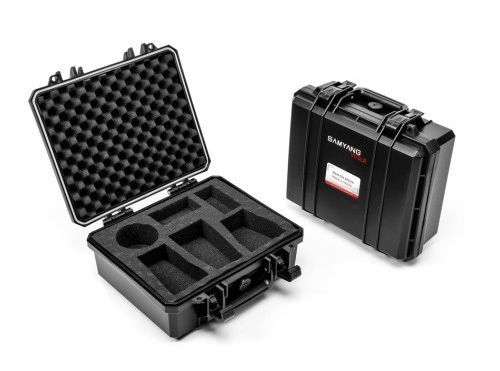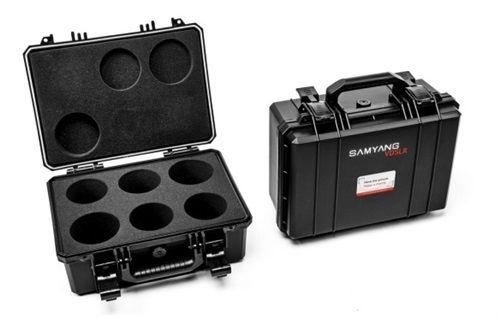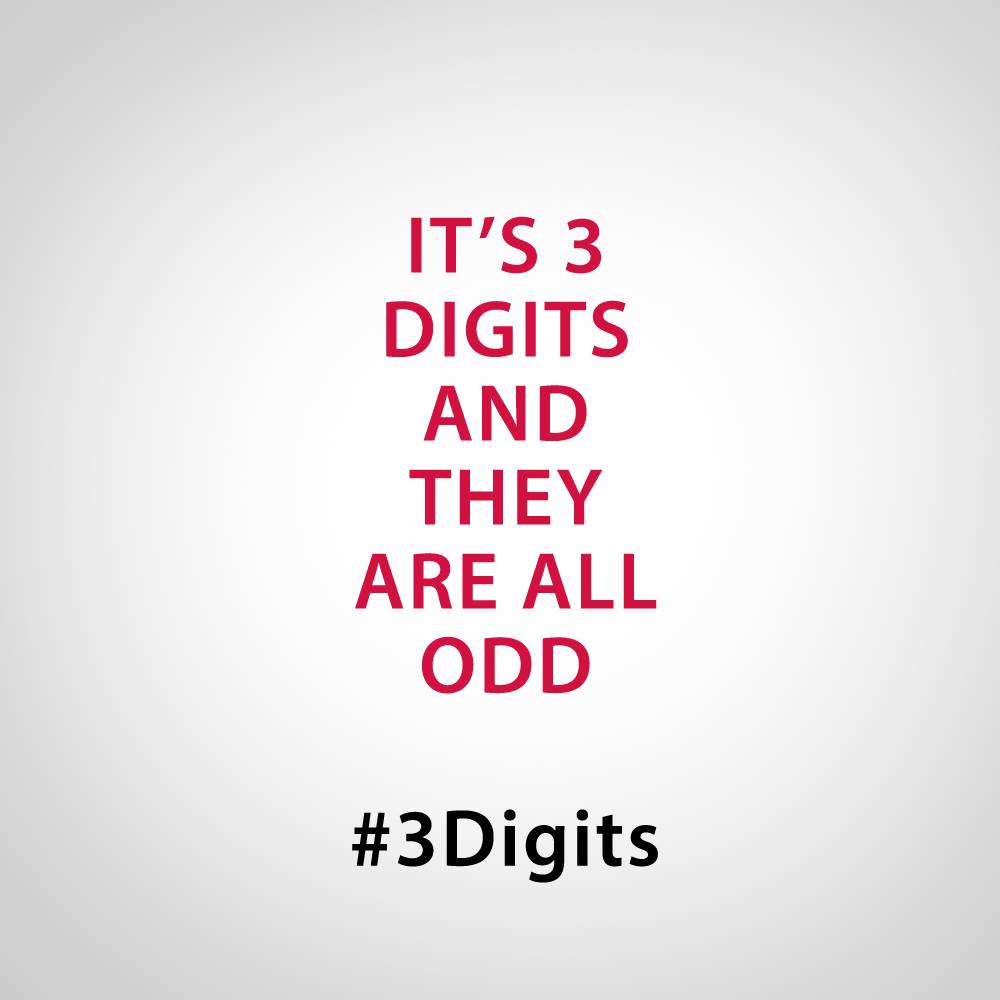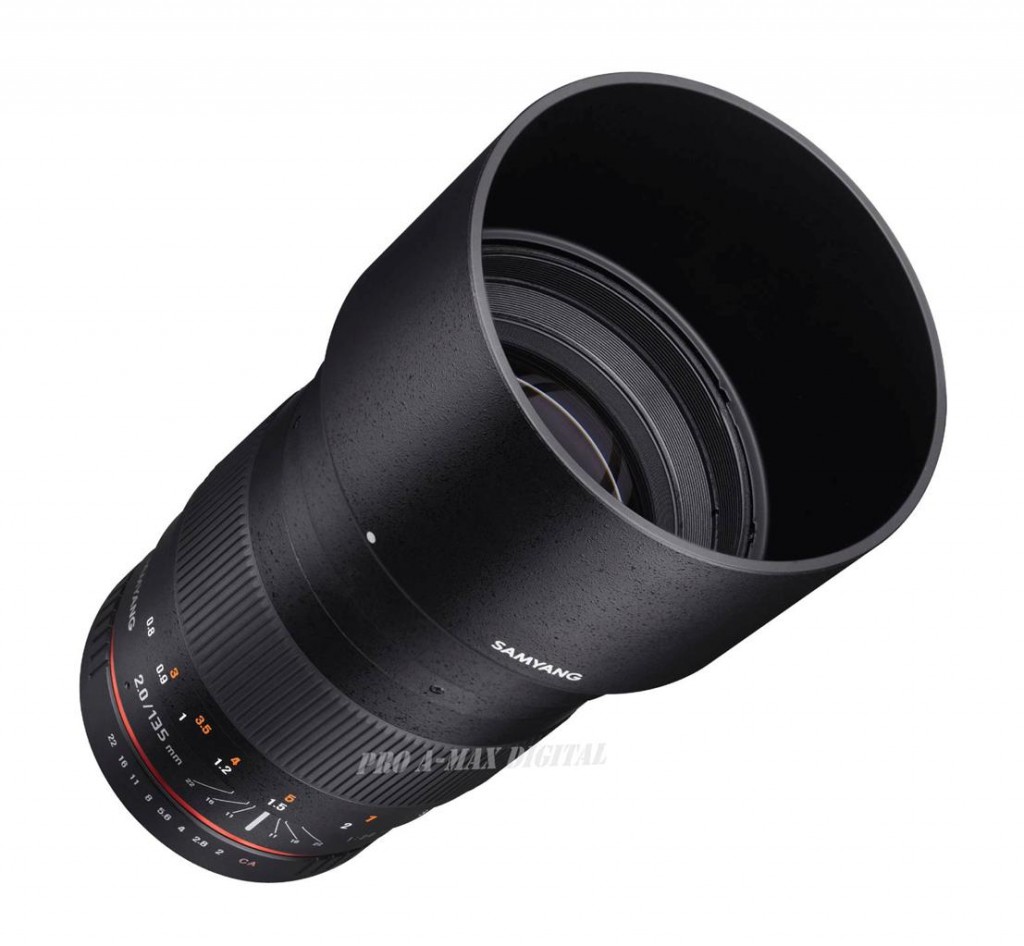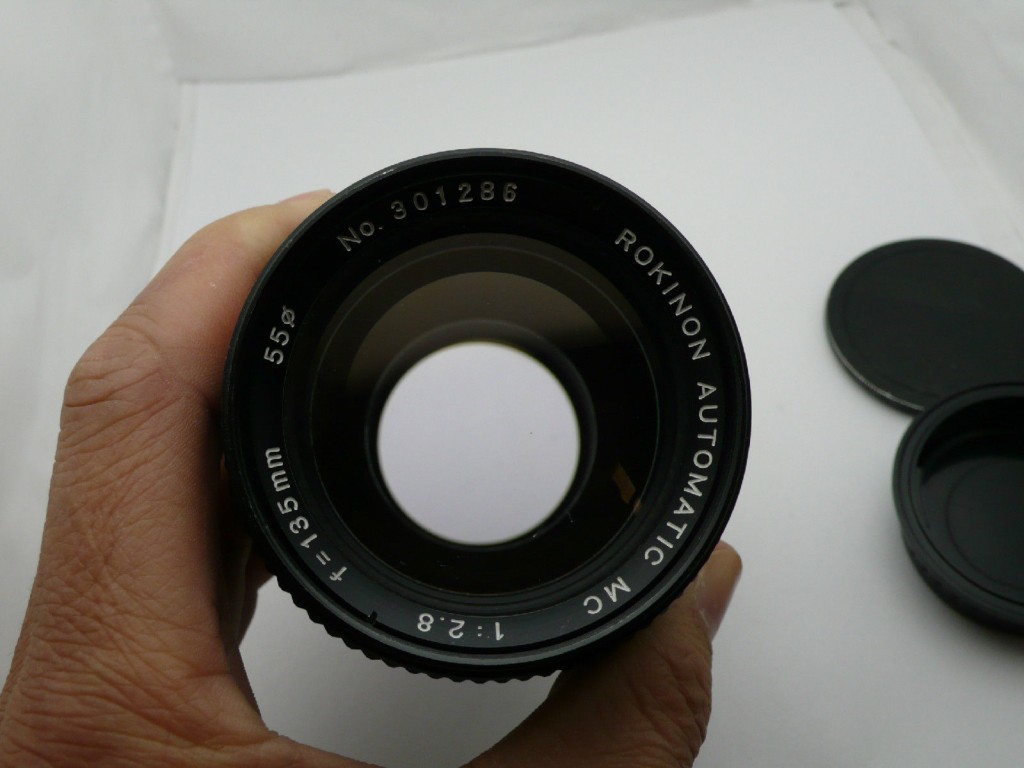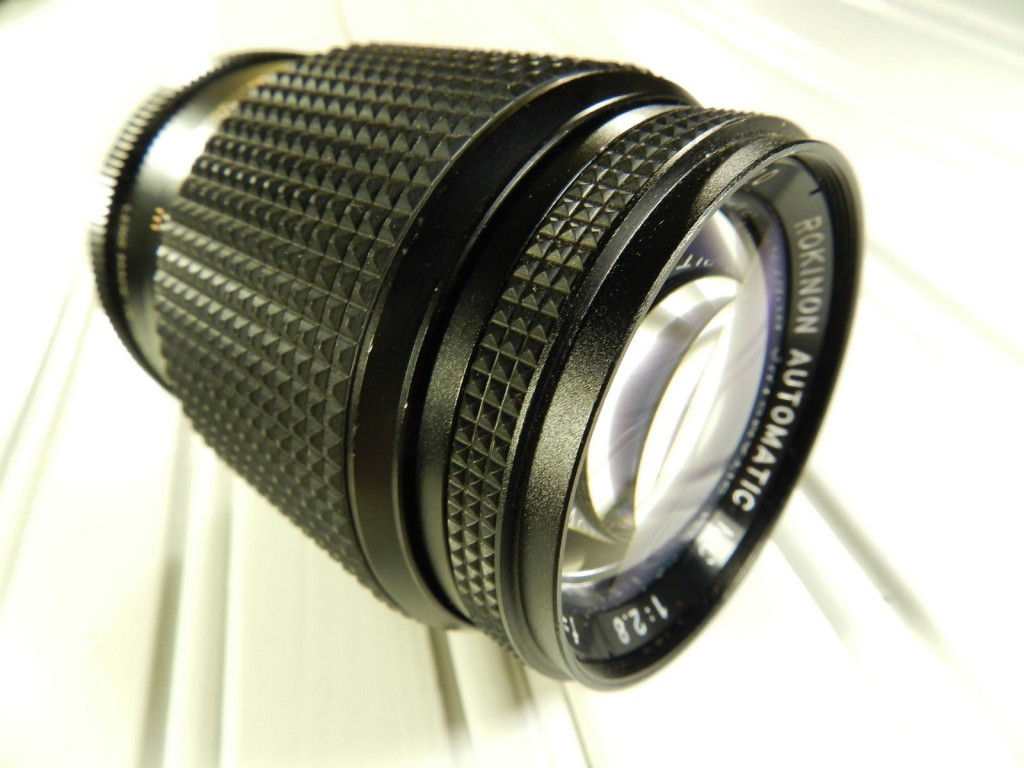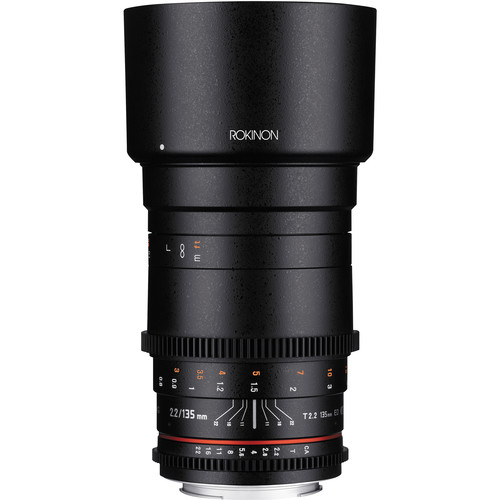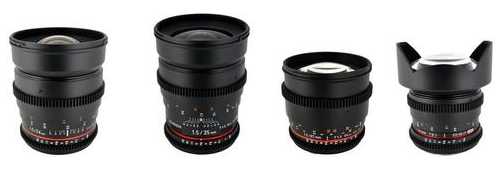
I’ve acquired a set of Rokinon lenses. My logic is because Rokinon are pretty much the only game in town when it comes to very affordable cine lenses (relatively speaking! As they still cost a pretty penny). The two sets which are commonly used on very low budget productions that you can go out and buy new tomorrow would be Rokinons (which also go under the name of Samyang and Bower) and Carl Zeiss ZF.2 (or Carl Zeiss ZE, which are essentially the same but for Canon and lack a manual aperture ring. I personally wouldn’t recommend them at all).
The next step up from them in terms of price would be costing thousands per lens, or even much much more. So quite out of the question for me at this point in time to be able to personally own (but perhaps in the near future.. !).
Otherwise, the other option is using DSLR still lenses from Nikon/Canon/Sigma/etc…. which is what the vast majority of “no budget” (well… relative to the millions that Hollywood films cost to produce. “No budget” might still easily mean a hundred thousand, or even a million dollar budget) filmmakers do, including myself. But they’re not optimized for film use at all, are instead designed with photographers in mind (who have different, and sometimes contradictory, needs to filmmakers. For instance AF lenses will typically have fairly short focus throws to make it easier on the AF motor, while we’ll instead be wanting much much longer focus throws).
The last alternative to consider, is older vintage lenses. Of which Contax / Yashica & Minolta Rokkor would be a couple at the top of the list to consider. These older lenses are all manual focus lenses and thus have in general much longer focus throws than modern still lenses, and while they lack modern features such as fast AF or optical stabilization, some of their glass & designs are absolutely top notch and can hold their own even today.
However they too have their own problems, one is the risk of buying second hand lenses which are decades and decades old. Thus hunting down to lenses to put together a whole collection which is in good condition would take a *lot* of time and effort. The other big one is they’re still lenses, so would each need a cine mod. Additionally, as they’re very old lenses, information on them can be a bit scarce on the internet…. so it can take a *LOT* of time researching what lenses are available, and how they perform, and the various variations, and how they changed. For instance often the “same” lenses might change from one year to another, so to identify which lens batch it is from you need to determine it via referencing it from its serial number against the info you’ve learned. Another issue, is often these vintage lenses are using a weird old unsupported lens mount, thus you’ve got less flexibility around adaptability vs going with a more modern mount that is still in active production such as Nikon F.
Last but not least: cost! In the end, would older vintage lenses be worth it if you make some good savings while getting great image quality? I don’t think so, as even if you don’t count the monetary worth of your hundreds of hours spent, the total cost of a lens collection of one of these vs what you could get going with Rokinon glass when on sale is a rather small difference. There is a couple of reasons why: back when people first “discovered” C/Y lenses as a cheap source of high quality glass for filming with, they were very cheap indeed. But since then the increased fame of them lead to increased demand, and their prices have gone up (same is true with the others too, as they get “discovered” again for filmmaking with larger sensors, and then their prices rise up). The second reason is while some of their lenses are absolute bargains indeed, a lens set is not made up of just a lens or two. So to round it out you’ll need others which are very rare and super pricey (by vintage lens standards), so as to have a complete matching set of lenses. Thus once you’ve done that, the financial reason to go down this path vs Rokinons quickly diminishes (a third reason for me specifically is shipping… horrendous! Private sellers, which is what most sellers of vintage lenses are, seem to far often charge like a raging bull for international shipping vs what Amazon charges me to ship the Rokinon lenses, which was not much as well). Thus while I was seriously considering researching further Contax / Yashica & Minolta Rokkor (I even have one Minolta Rokkor lens currently), in the end they don’t make it out as my top choice to go with. But if you don’t mind an obsolete mount and content with only having a small set of the more common/cheaper focal lenses (such as a 3 lens set, composed of 28mm + 55mm + 105mm to give one example) rather than filling out all the holes in the range to get a comprehensive set, then going with one of these vintage lens sets could be an incredibly good idea for you and give you a more unique look for your film in the process too.
There are a few (but only very few) other options to consider too, but they’re all too niche for me. Such as the various cine lens options for Micro Four Thirds (SLR Magic cine lenses, Voigtlander Nokton Cine-Mod Primes, & Veydra cine lenses), I have one SLR Magic cine lens myself. But the problem with all of these, is they’re extremely limited, you can only use them on m4/3 cameras, and I want to have the maximum amount of flexibility in the use of my lenses.
So after going over all these options and their drawbacks, this leaves me with either Rokinon or Carl Zeiss ZF.2
Carl Zeiss ZF.2 are nice, I’ve shot a short film with a complete set on a Sony FS700 (coincidentally, at the moment my profile pic is me with a ZF.2 lens in my hands. The full set of BTS photos is “here”). But:
a) even though they’re a common low budget set for filmmaking, they are also lenses which are made for still photographers. Not filmmakers.
b) the cost!! Even though they’re “low budget” lenses by filmmaking standards, they’re still rather pricey for a complete set. I couldn’t see myself owning them in say the next year or two, would instead be some time further off in the future.
So how about Rokinon? Well, although their listed RRP is sometimes not too far off what a Carl Zeiss goes for (specifically their 50mm f/1.4 lenses are both the same price), most are two or three (or even four) times the price of their focal length lens from Rokinon. But even better, I know Rokinon lenses very often go on sale. And just sometimes, at quite steep discounts too! Thus with patience, a Rokinon set could be put together a *lot* cheaper than a Carl Zeiss set. And additional big factor, is while the Rokinon lenses are based on still lenses, they are at least a lot closer to being true cine lenses than the ZF.2 lenses are.
Another small factor is these ones on special that I purchased are all the new Rokinon DS cine range, which has further improved the cine side of these lenses (such as having a consistent point on the lens where the focus gears are put, across the range of lenses. And better colour matching of the lenses across the entire range of lenses).
I know a person who has the older set of Rokinon cine lenses, I should find out if he is interested in doing a comparison test against these newer Rokinon DS cine lenses once they arrive. Specifically to see if the DS cine lenses have better colour matching, and by how much so.
http://en.wikipedia.org/wiki/Flange_focal_distance
Nikon lenses can be used on more cameras than Canon lenses can be. Simple matter of math, the relative flange lengths.
Additionally Canon EF lenses which lack a manual aperture ring (which is nearly all of them) need electronics to control their aperture, which makes it much trickier, more expensive, and as a general rule slower to market too, to make adapters (and related products, such as focal reducers) for them.
See the typical five fold difference (or more!) in price between a typical Nikon G adapter vs a Canon EF one from China as an example.
Claims of Canon’s “amazing glass” is all B.S., as yes they have very very very excellent lenses. But so does Nikon (and so does Sigma, Tokina, Carl Ziess, etc… which can all come in NIkon mount as well as Canon mount). Yes you can pick out a particular Canon lens and compare it against a specific Nikon lens and claim “Canon is better”, but that is cherry picking nonsense. Same can be said in reverse too. Overall, when taken as a whole across the system I don’t think either is significantly stronger than the other when it comes to lenses. (and the argument for Nikon or Canon over the other on the basis of lenses, becomes a lot lot *lot* weaker when we’re discussing third party lenses, such as we are doing here with Rokinon. Because they come in both mounts)
